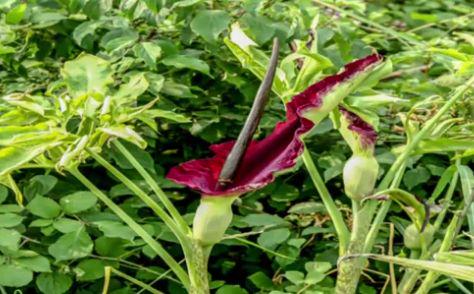
The dragon arum is indigenous to Slovenia; it was last described in the Dragonja River Valley in Slovenian Istria between the two world wars. In recent times, the flower was considered extinct – until an amateur botanist named Jože Lango from Izola discovered it next to a dumping ground on the road to Ankaran in 2010. As he was driving past the site, he noticed the attention-grabbing crimson flowers that poked out of brambles, reports the Institute of the Republic of Slovenia for Nature Conservation.
Over the years, the site was increasingly being covered by improperly dumped building material and other waste. The dragon arum was endangered and one of its tufts had been buried by the waste. The Institute for Nature Conservation, along with the discoverer, determined that the remaining four tufts of the plant would best be preserved if they were moved to a more secure location.
A favorable environment at Debeli Rtič
The dragon arum wasn't just a single plant – it was composed of four tufts that needed to be protected immediately. But how? The discoverer did not get much support from experts at first. However, he did get the attention of Institute for Nature Conservation, which teamed up with the local public utility company and helped to move the plant, along with several new bulbs, to a safe spot. The plant found its new home at the Debeli Rtič Youth Camp, where the soil has enough moisture and nutrients, is porous enough, and lies partly in a shady and partly in a sunny area. The plant is expected to flower again in the spring.
The efforts to protect this undemanding and endangered flower have been immense. Those who would like to have a dragon arum of their own should be aware of something else: the flower is characterized by a smell of rotten meat, which attracts flies for pollination. It is also known as the "stinky lily," and is not much liked by gardeners.
A. K., Elen Batista Štader, translated by J. B.

































































